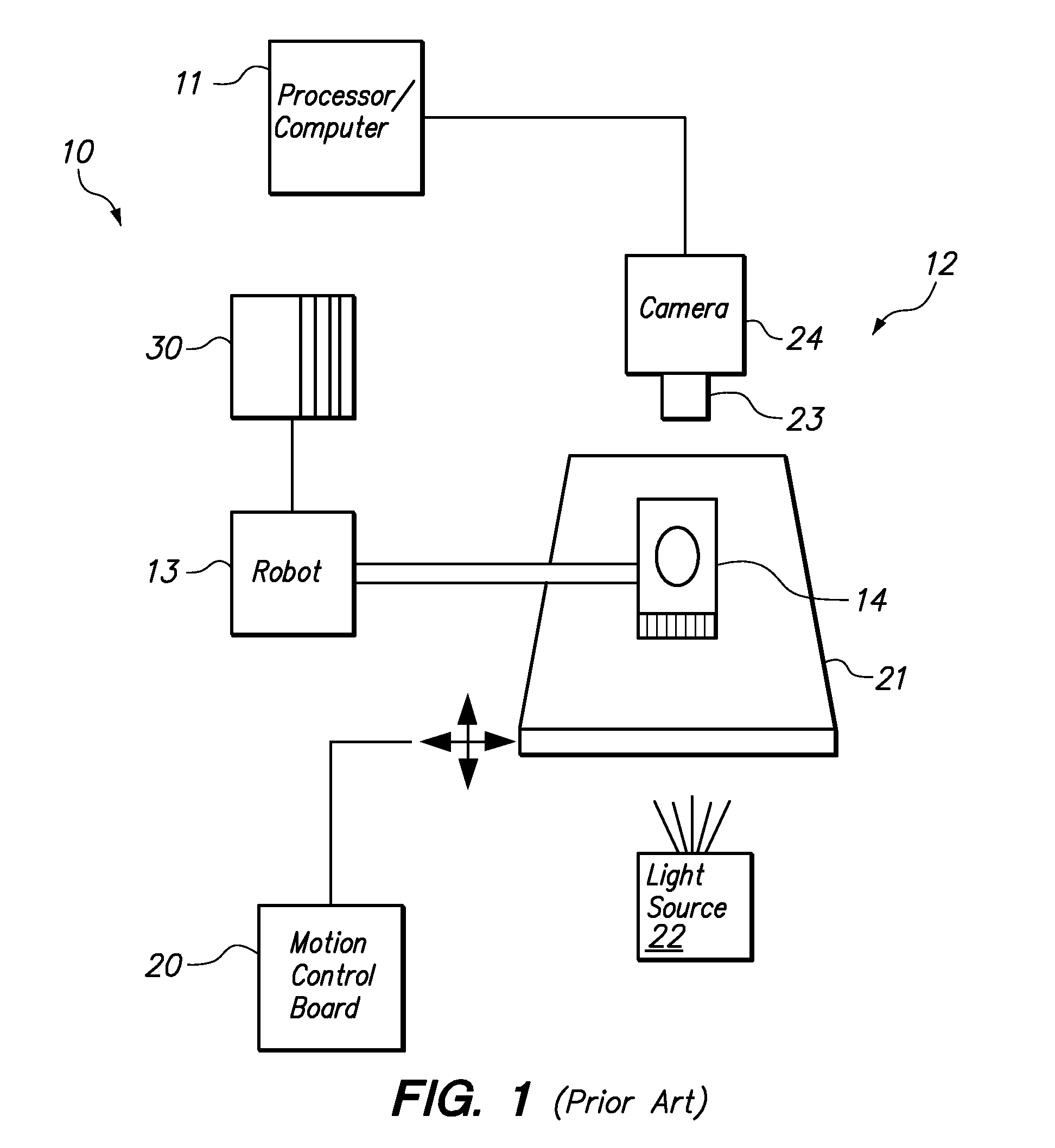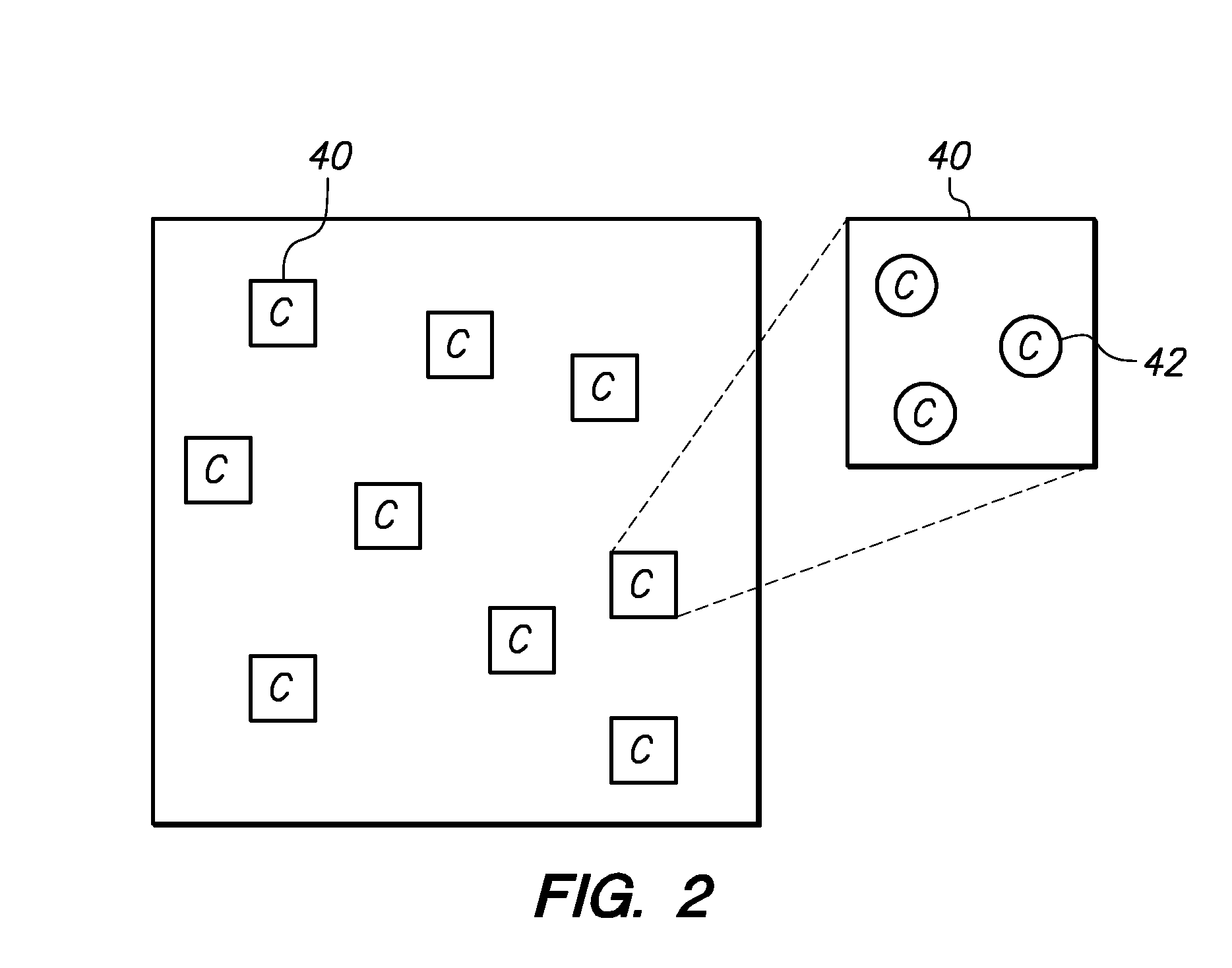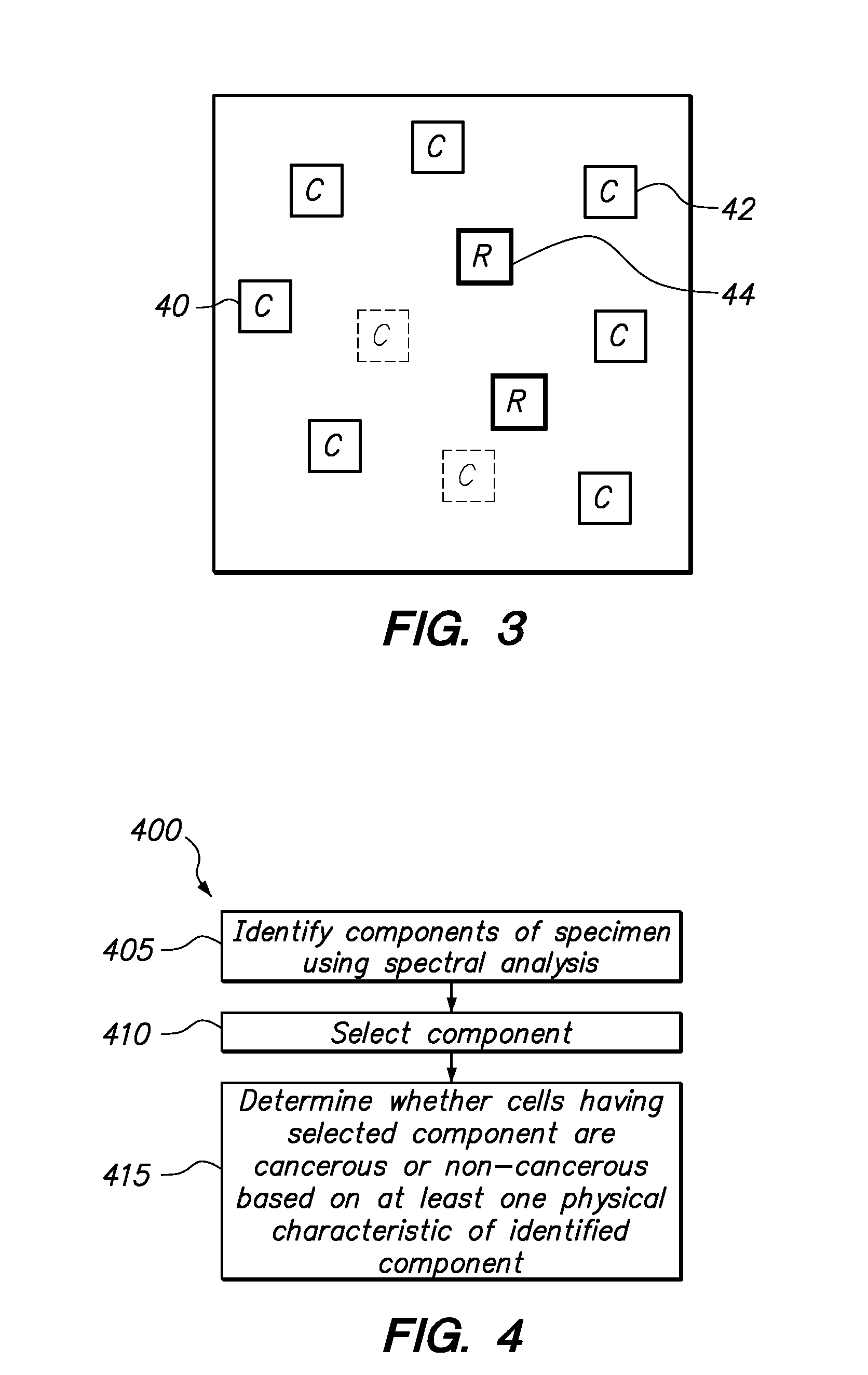Method and system for processing an image of a biological specimen
a biological specimen and image processing technology, applied in image analysis, image enhancement, instruments, etc., can solve problems such as less accurate diagnosis
- Summary
- Abstract
- Description
- Claims
- Application Information
AI Technical Summary
Benefits of technology
Problems solved by technology
Method used
Image
Examples
Embodiment Construction
[0036]Referring to FIG. 4, according to one embodiment of the invention, a method 400 of processing an image of a biological specimen, e.g. a cytological specimen, includes identifying components of the specimen using spectral analysis in step 405. After components are identified, in step 410, one of the components is selected. For example, the selected component may be a nucleolus of a nucleus. Then, in step 415, a determination is made whether cells that include the selected component are cancerous or non-cancerous based on one or more physical characteristics of the component.
[0037]Referring to FIG. 5, a method 500 of processing an image of a biological specimen includes receiving a pixel that is to be imaged in step 505. In step 510, spectral analysis is performed to determine whether a pixel is background, cytoplasm, nucleus or nucleolus. For purposes of explanation and illustration, reference is made to nucleus and nucleolus components since background and cytoplasm components...
PUM
 Login to View More
Login to View More Abstract
Description
Claims
Application Information
 Login to View More
Login to View More - R&D
- Intellectual Property
- Life Sciences
- Materials
- Tech Scout
- Unparalleled Data Quality
- Higher Quality Content
- 60% Fewer Hallucinations
Browse by: Latest US Patents, China's latest patents, Technical Efficacy Thesaurus, Application Domain, Technology Topic, Popular Technical Reports.
© 2025 PatSnap. All rights reserved.Legal|Privacy policy|Modern Slavery Act Transparency Statement|Sitemap|About US| Contact US: help@patsnap.com



